Heads up – Big Garmin sales are out!!! The Garmin Fenix 8 is $250 off, the Forerunner 965 is $150, the Garmin inReach Mini 2 is $249, and a ton of other Garmin gear has substantial discounts! Go check out the full list here!
I’m DC RAINMAKER…

I swim, bike and run. Then, I come here and write about my adventures. It’s as simple as that. Most of the time. If you’re new around these parts, here’s the long version of my story.

You'll support the site, and get ad-free DCR! Plus, you'll be more awesome. Click above for all the details. Oh, and you can sign-up for the newsletter here!
Here’s how to save!
Wanna save some cash and support the site? These companies help support the site! With Backcountry.com or Competitive Cyclist with either the coupon code DCRAINMAKER for first time users saving 15% on applicable products.
You can also pick-up tons of gear at REI via these links, which is a long-time supporter as well:Alternatively, for everything else on the planet, simply buy your goods from Amazon via the link below and I get a tiny bit back as an Amazon Associate. No cost to you, easy as pie!
You can use the above link for any Amazon country and it (should) automatically redirect to your local Amazon site.
While I don't partner with many companies, there's a few that I love, and support the site. Full details!

Want to compare the features of each product, down to the nitty-gritty? No problem, the product comparison data is constantly updated with new products and new features added to old products!

Wanna create comparison chart graphs just like I do for GPS, heart rate, power meters and more? No problem, here's the platform I use - you can too!

Think my written reviews are deep? You should check out my videos. I take things to a whole new level of interactive depth!

Smart Trainers Buyers Guide: Looking at a smart trainer this winter? I cover all the units to buy (and avoid) for indoor training. The good, the bad, and the ugly.
-
Check out my weekly podcast - with DesFit, which is packed with both gadget and non-gadget goodness!

Get all your awesome DC Rainmaker gear here!
FAQ’s
I have built an extensive list of my most frequently asked questions. Below are the most popular.
- Do you have a privacy policy posted?
- Why haven’t you yet released a review for XYZ product you mentioned months ago?
- Will you test our product before release?
- Are you willing to review or test beta products?
- Which trainer should I buy?
- Which GPS watch should I buy?
- I’m headed to Paris – what do you recommend for training or sightseeing?
- I’m headed to Washington DC – what do you recommend for training?
- I’m from out of the country and will be visiting the US, what’s the best triathlon shop in city XYZ?
- What kind of camera do you use?
-
5 Easy Steps To The Site
In Depth Product Reviews
You probably stumbled upon here looking for a review of a sports gadget. If you’re trying to decide which unit to buy – check out my in-depth reviews section. Some reviews are over 60 pages long when printed out, with hundreds of photos! I aim to leave no stone unturned.
Read My Sports Gadget Recommendations.
Here’s my most recent GPS watch guide here, and cycling GPS computers here. Plus there are smart trainers here, all in these guides cover almost every category of sports gadgets out there. Looking for the equipment I use day-to-day? I also just put together my complete ‘Gear I Use’ equipment list, from swim to bike to run and everything in between (plus a few extra things). And to compliment that, here’s The Girl’s (my wife’s) list. Enjoy, and thanks for stopping by!
Have some fun in the travel section.
I travel a fair bit, both for work and for fun. Here’s a bunch of random trip reports and daily trip-logs that I’ve put together and posted. I’ve sorted it all by world geography, in an attempt to make it easy to figure out where I’ve been.
My Photography Gear: The Cameras/Drones/Action Cams I Use Daily
The most common question I receive outside of the “what’s the best GPS watch for me” variant, are photography-esq based. So in efforts to combat the amount of emails I need to sort through on a daily basis, I’ve complied this “My Photography Gear” post for your curious minds (including drones & action cams!)! It’s a nice break from the day-to-day sports-tech talk, and I hope you get something out of it!
The Swim/Bike/Run Gear I Use List
Many readers stumble into my website in search of information on the latest and greatest sports tech products. But at the end of the day, you might just be wondering “What does Ray use when not testing new products?”. So here is the most up to date list of products I like and fit the bill for me and my training needs best! DC Rainmaker 2024 swim, bike, run, and general gear list. But wait, are you a female and feel like these things might not apply to you? If that’s the case (but certainly not saying my choices aren’t good for women), and you just want to see a different gear junkies “picks”, check out The Girl’s Gear Guide too.

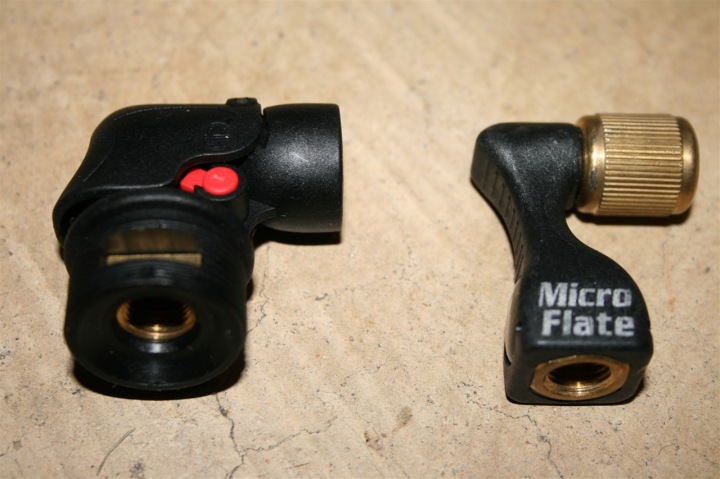
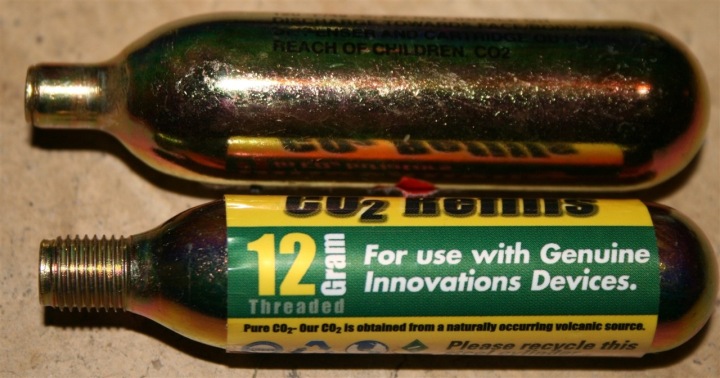
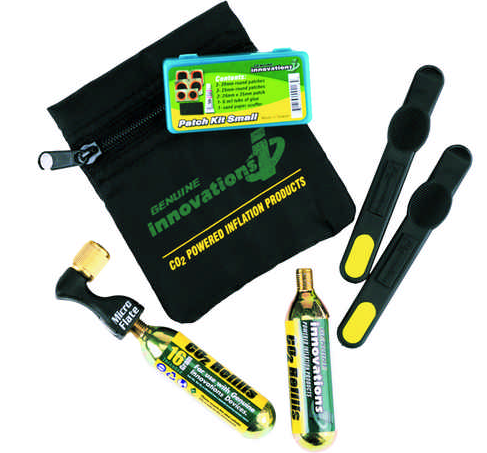
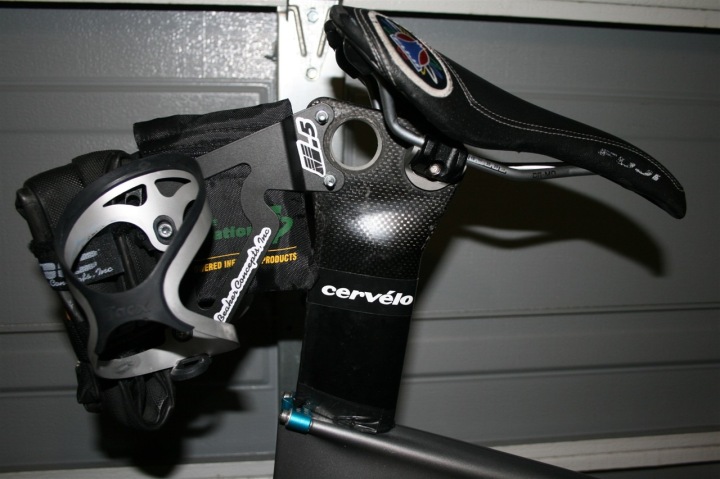
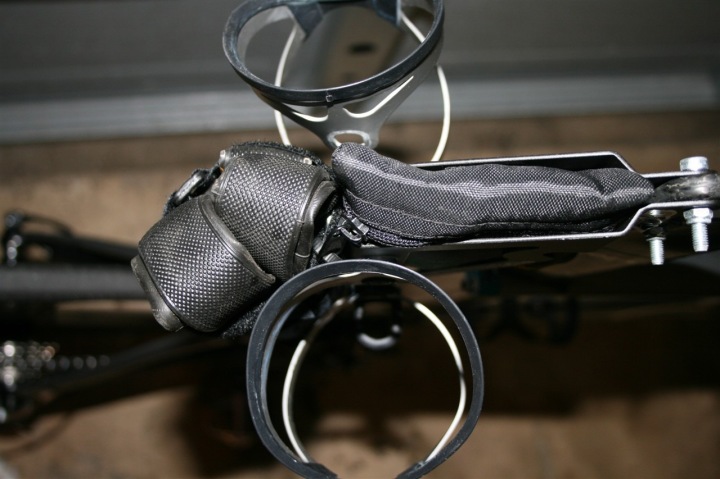
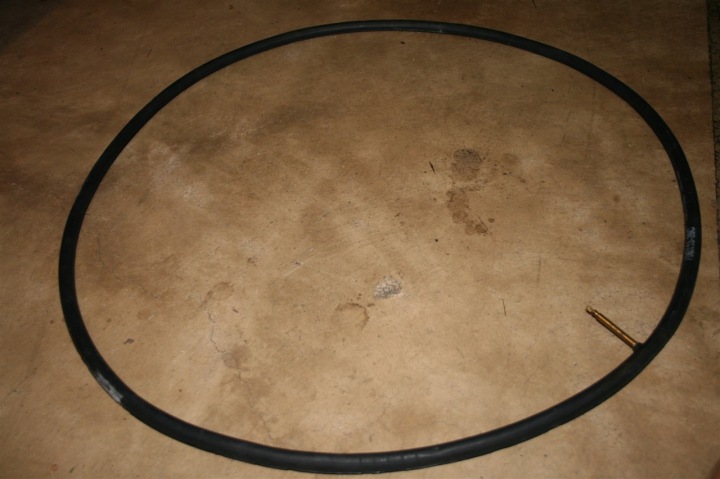
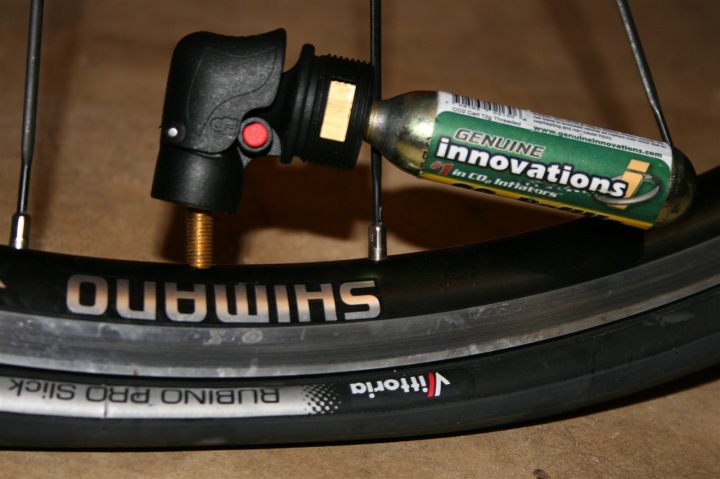
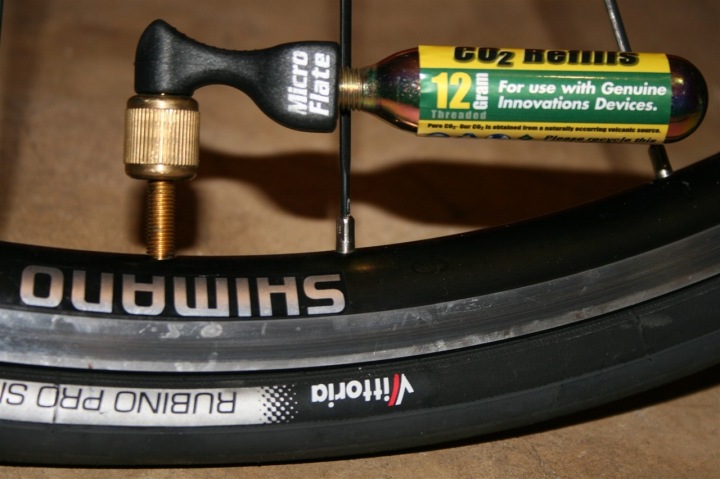
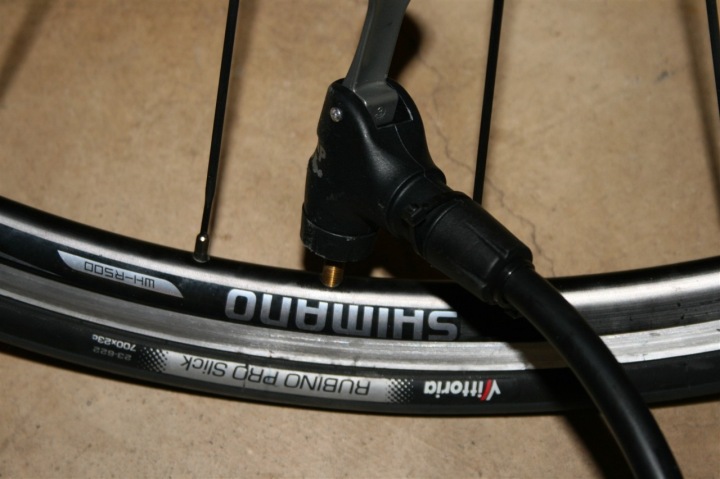













Nice CO2 guide Ray. Weight is less of a concern to me so I’ll probably stick to my pump, but I’ve been curious about this inflation method and appreciate this info.
Oh my God, I totally needed that lesson (although I could have done with it two weeks ago). Picture Danielle on the side of the road on RAGBRAI thinking she is badass for changing her own tire (and her back tire to boot) despite the multitude of people who offered to help. Gets ready to inject the air and then hesitates… “Wait, how do I just put a little bit of air in my tire to get it back on and then inflate it all the way?” (I didn’t even know they had flow control ones) I was perplexed. It never occurred to me you could blow up your tire with your mouth. And eventually a guy saw me staring at my CO2 cartridge confusedly and stopped and used his little pump to fill my tire.
Damsel in Distress 1
Badass 0
Oh, fantastic post! I’ve been wondering about CO2 cartidges. I still need help on the general changing a tire thing though because I blew up a tube last night while trying to inflate it. Scared the bejeezus out of me, so I’m off to the bike shop to get them to show me how it is done…
Hahaha this made me laugh considering I JUST posted about my pumping troubles.
Ray, this post was great. I tried my CO2 cartridge a couple of months ago, just because I had never used one before.
I did not think to blow up the tube a bit via my mouth and will give that a try. I also did not know about the need to refill once I got back home after using the CO2.
Thanks – great info and a terrific read with, as always, excellent photos.
I learned the tip about blowing into the tube from the bike tech when I bought my bike. He made the whole thing look easy.
The first time I tried to fix a flat I was home visiting my parents so my Dad “helped.” He snapped a lever and I got so frustrated that I stormed off.
I don’t even remember how the new tube got on the bike.
I can finally do it, but it takes me about 20 minutes and I need a nap afterwards. I pretty much just pray to the triathlon gods that I don’t get a flat in a race.
Ohhh! Perfect timing. I just got C02 last weekend and kind of new how to use it but not really. You always have such great tips! Thank you!
That was great, Ray! Thankfully I had already made all my mistakes and am somewhat skilled in using the darn things, but I still get a little scared about screwing it up every time.
I like to use the full cartridge holder, only because it doesn’t turn so cold on my hands. I had one similar to yours and the first time I used it I screwed it up because I was like “OH MY GOD IT’S COLD!” and I let go of it thinking it was going to blow up my hand or something. :)
GREAT instructions!
Great post, learn something new every day as they say and I did about the the need to refill on the hand pump! Who knew…well obviously you did, thanks again.
“Cartridges come in different sizes – 12g, 16g or 25g. The smaller ones are designed for filling tires up to about 90 PSI. The larger ones are designed for filling tires up to 120+ PSI. This corresponds to lower pressure tubes such as clinchers (typically 90-120PSI) and tubular’s (140-170 PSI) such as race wheels.”
This is like an SAT question.
If biker A leave Skyline at 10am and biker B leaves DC at 11 am, but biker A has aerobars …
Good stuff…hey, I changed my blog address, FYI, to
link to kim-bobl.blogspot.com
Now using plain “Bob” instead of Tribob.
Excellent post, professor. I love using the CO2s also, but there was a definite transition period of wasting a lot of cartridges. Now I love them, and I spend way more time getting the dang wheel back on the frame than I do pumping air.
2 questions: where do you buy cartridges? I’ve found a big discrepancy in prices from shop to shop. Also – what kind of irons do you use to get the wheel off and on the rim?
Amazon or Wally World (look in the sports section, near the air guns). They’re dirt cheap if you buy a box, just be sure to get the right type for your nozzle (threaded or non-threaded). Go for a generic brand and save money, they’re the exact same thing as the fancy-labeled ones marketed to cyclists for twice as much.
Yes, check Amazon. For box of 6 cartridges. Cheaper than LBS.
Did you write this specifically for ME?! I KNOW you did! after i blew the first cartridge (SO smart to attach the nozzle FIRST, then the cartridge, duhhhhh), i gave up and called for a ride.
i’m not so much down with the blowing the tube up with my mouth though. that is seriously badass. but only if people see you doing it.
i’ve been using co2 cartridges for a few months now and love ’em. now that i’ve really figured out how to change a tire quickly i think the weight factor and speed definitely makes it worth it.
since i bought those continentals i’ve ridden about 100 miles and no flats. thanks for the recommendation!
I would also like to add something.
If you are using a disc wheel in a race, make sure that your fill device fits in the slot!
I made this rookie mistake ONCE.
I was leading the race and all I could do is stand on the side of the road and watch everyone go by.
I had a device like the one
pictured on the left. A microinflate is what you need.
Ooooh what rear hydration frame is that, though I recognise the Tacx Taos.
It’s the HydroTail H.5 – I wrote up a whole post on the setup here with all the deets:
link to dcrainmaker.blogspot.com
Note, after considerable time, I’ve decided that the Tacx cages suck though – they snap off way too easily. That said, if you simply replacethe upper screw with a waster and screw, life is grand and they’ll never snap.
Just one complaint where you say:
Depending on if you have a higher pressure tire (such as a race wheel), you may need to do one more cartridge to get to full pressure. Remember that riding a low pressure wheel will likely only get you a flat again – so be sure to really get as much pressure as you can without exceeding the limits of the tube/tire.
To me that seems to be recommending people overinflate their tire instead of using the correct pressure. So really you should aim for 15% drop which means you need to factor in tire width and your weight which in general means you’re no where near the limits of the tire. I realize its hard to tell pressure with a CO2 cartridge so its generally better to go over but that still should be the aim.
I generally do group rides so use a road morph pump. (the only one I’ve found so far that can get to a high psi easily and it has a nice pressure guage) That way if someone in the group needs help I don’t have to worry that I’m screwing myself.
Hi Eli!
Thanks for dropping by!
My comment was specifically referring to race tires that have PSI at 170 – such as many tubulars. For example, a typical cartridge will only get you to either 90 or 120. But that’s almost half what a typical race tire needs, and would be very unstable on corners/descents.
But in general I agree, over-inflating is just as bad as underinflating. It’s important to know what your tires will need and be able to judge accordingly.
In 1977, I was on a relay team for the Lanai-to-Maui swim race. There were were a couple Marines on our 6 man team, slightly older than me. After the race, they asked me if I would like to participate in an informal race they had done the previous year; *swim the Roughwater course * ride the around the Ko’olau mauntain cours and finally *run a marathon course.
I said no thank you, thinking, “Nobody is crazy enough to do that except Marines.”
Yep, those were the guys that started the original Ironman.
And was I wrong! LOTS of people crazy enough to participate!
I’ve just met too many people who think the pressure rating on the outside of the tire is the recommended tire pressure when its really just the max the tire can handle. Since most people I meet use clinchers and some of them are racers who think the higher pressure gives them an advantage.
Going by this tubulars shouldn’t be inflated so high either:
link to adventurecycling.org
link to cyclingcrowd.com
According to the instructions on the side of my CO2 carts, they recommend using them in the vertical position to get the maximum gas out. No idea why that would be, but thought I’d share…
Because CO2 is heavier than air and flows down, not up. Orienting it vertically allows more air to get into the tire, especially as it becomes quite cold near the end due to the laws of thermodynamics.
Actually, holding it vertically or horizontally makes zero difference. The CO2 is stored under pressure. Yes, it is heavier than air, but it isn’t entering your tire by gravity. To do so it would need to be heavier than the pressure it is creating which is scientifically impossible.
Just wanted to add that there are also nozzles without an extra flow control lever per sei, but still provide flow control by means of turning the cartridge. After installing the (threaded) cartridge, the seal is popped, but flow is blocked. You then have to screw it back out of the thread ever so slightly to release the CO2. If you turn it back in, CO2-flow stops again…
Does the Little Kit from Peformance come with a flow control valve?
Thanks!
No, unfortunately not. At least, not the variant I picked up years ago.
If you are using Innovation Micro Inflate all you need to do to control the flow of CO2 is screw the canister all the way tight and then back off the canister a little at a time to inflate the tire or tube, you can use as little air as you want. I use and sell these all the time, they work great.
HEY I’ve been wondering – usually a CO2 cartridge takes all the canister, but I had a low tire and used it – with a control valve – and now wonder – it it done for, or can I reuse it? I’m guessing it’s a one time thing, since it has a specific pressure ….
I’m betting not. Given the high pressure, I’d bet that it won’t take very long (a couple hours?) for the remainder to slowly seep out through the nozzle.
Take a trick from pellet guns and put a very small smear of grease on a cartridge before you insert it, so the nozzle side becomes lubricated. This creates a very good seal and will likely allow your partially-spent cartridge to retain pressure for weeks if not months.
I’m a big fan of CO2 and the members of my group are slowly, grudgingly moving over to them.
I would add a step #3.5: After filling the tube with a bit of air, carefully CLOSE THE TUBE VALVE. My experience is that the tiny bit of pressure in the tube at this point is insufficient for a Presta valve to reliably remain closed.
Regarding which CO2 cartridge size to use, for typical recreational road cyclists with 23mm tires I would never use the 12g cartridges, and when the air temperature is the least bit cool–say, below 70 degrees F–I recommend the 20g cartridges to avoid a subsequent pinch flat from inadequate tube pressure. They can cost 3 times as much as the threaded 16g cartridges but they’re worth it.
I know this is a relatively older post, but I wanted to let you know that I did find it very useful. Racing my first 70.3 this weekend and I had been asking myself about carrying CO2 with me “just in case”. So your post was very informative and helped me make up my mind. Thanks!
Awesome, glad it could be helpful! Good luck this weekend!
Thanks for the helpful site. Bought a road bike 4 months ago and have not had a flat tire (YET!!). Bought all the cartridges, control valve and levers, and now am awaiting my first roadside flat. Thought i would research the procedure ahead of the inevitable.
Al Barry
Can’t believe you omitted critical safety advice! Protect your hand from the intense cold as the cartridge depressurises. Its actually possible for your skin to stick to the cartridge and come away if you pull it off. I’ve seen it happen, so always use a cartridge sleeve or similar.
“I TRIPLE dog dare you!” LOL
The version of the PDW Shiny Object with included CO2 comes with a nice leather sleeve for the cartridge (hey, Ned, if you’re reading this, I’d like mine back!) and the replacement Bontrager Air Rush (available at any Trek dealer for a mere Jackson) came with some kind of rubberyish cartridge sleeve to serve the same purpose.
That said, I cut segments of old 28mm butyl tubes and slip them around the CO2 cylinders. Provides insulation for my digits and also makes for less noise from the CO2 cartridges rattling around in the seat bag (for those so inclined). Probably a little too DIY for some, but it works for me.
Hiya Ray,
As per Naomi I know this is an old post now but CO2 hasn’t changed much in the past 13 billion years so there’s no harm in making a few more comments.
Have you had any problems with the cooling effect of the CO2 expanding as it leaves the cylinder? Apart from freezing the tips of my digits (countered these days by foam or neoprene cylinder sleeves) I’ve had one or two occasions where the rubber/latex/butyl around the valve has frozen and snapped during the inflation process. Which has made me dubious about CO2 inflators, though i still carry them on all rides and races. Ever encountered this?
Thank you in advance
Sam
I definitely haven’t seen that. My single biggest issues in CO2 is A) TSA taking them away from me B) Remembering to grab threaded and not non-threaded.
Very useful post! I just fell for neglecting that final step after using CO2 for the first time and took the bike to the shop to see if I had a hole in the tire that re-punctured the next tube. Doh! Fortunately they didn’t charge me anyway, but now I know.
So for a 25mm tire, am I looking to use a 12g or 16g cartridge? I’m thinking the latter is probably best but ended up buying a mix of them without thinking.
Thanks again for writing this post.
What are your thoughts on using Tire Sealant instead of tubes and CO2?
link to competitivecyclist.com
link to triradar.com
link to youtube.com
I know a number of folks that do, primarily during races. For me though, the CO2 is a quick and known thing – and more importantly, when I travel with my bike and TSA takes my CO2, it’s cheap to replace. ;)
Sealant such as Vittoria’s Pitstop is only option in shorter Triathlon races (Olympic or sprint ) for bikes using tubular tyres as putting on a spare tyre is too much time and stress for average Joe.But Co2 is still needed to top up if Pitstop does not inflate hard enough.Watch YouTube for info on Pitstop use.
Stumbled upon this while surfing your site. Very informative and timely considering I’m looking to ditch my pump in favor of CO2 cartridges. I see this is an older write up. In the automotive world Nitrogen is the preferred gas for tires, as N is a larger molecule than O2 (and CO2). Has the cycling world moved, or considered the move to N?
Same. Stumbled upon this while surfing your site :-)
And I also experienced the CO2 “deflation phase” by myself. Actually, I lost (read sent to the trash) some tubes I believed were flat after using a CO2 cartridge and waiting for 1 or 2 days, angry at myself that I couldn’t change a tube properly :-)))
Last weekend, I pumped the old way a deflated tube (originally inflated with a CO2 cartridge) and it stayed inflated.
That’s what I call experience :-) … confirmed by theory, thanks to your link ;-)
So now: new tube => C02 => deflate => pump
One more tip regarding rear wheel tier repairs – Not really specific to CO2 but anyway:
Make sure your chain is shifted to the smallest chainring both on the front (crank chainrings) and the back (cassette/socket).
This makes it a lot easier and faster to get the rear wheel on/off the bike and will save you time and most likely grease/dirt on your hands trying to get the wheel back on without the chain getting stuck :-)
PS ! If you are lucky enough that you brake has a “release mechanism” make sure to use it as this will further help you getting the wheel ofte/back on. Unfortunately many Tri bikes does not have this otherwise very convenient feature/functionality :-(
Tip when handling another persons CO2 inflator. NEVER, I repeat *NEVER* assume a cartridge screwed into a nozzle has been used.
The damage caused by a very high velocity cartridge being ejected from a nozzle has to be seen to be believed……
Nice post…great write up. I’ve used CO2 for years, but didn’t know it dissipated quickly after inflation. No wonder….. Thanks
I’m still slightly puzzled as to which size cartridge I would need. Currently I’m riding an entry level road bike on 110 psi. Which size would I need, 16g or 25g?
Thanks in advance
16G is normally good to about 90PSI, which is fine in most situations post-flat. However 25G will get you all the way to 110 – and have some leftover in case you need to top-up (such as developing/finding a secondary slow-leak). I always buy the bigger ones if I can.
Thankyou for the response, that’s made it alot clearer. Great review by the way. Not bought any yet but can’t wait to give one a go
Hi Ray, awesome post as always…
Now I still have a question: I know now I need a 25g cartridge since I have 404/808 clincher zipp wheels that use 110psi. So, how do I know I do not over inflate them???
Thanks!
There isn’t really a perfect way there, other than feel to be honest.
Ok, thanks! I guess I just need to practice it then.
Then why use CO2 – why not N2 for a permanent (& less oxidising) inflation?
This post here discusses it quite a bit: link to weightweenies.starbike.com
Though, the more logical answer is that I certainly haven’t seen N2 sitting in bike shops globally.
Physics!
CO2 can be compressed to a liquid at ambient temp so takes v little space. N2 and 02 cannot and so take more space or need much higher canister pressure.
Do you have a recommended brand for the inflator (cheap but good) … more on the one where you can control the air/co2. Thanks
It was unfortunately just a generic kit.
Genuine Innovations Air Chuck Elite CO2 inflator, has worked for me without any issues for 4 years.
My 2 cents worth. Take your micro hand pump along after you’ve changed your tube, use that to partially inflate your new tube. This checks everything’s fitted right and you’ll get a higher final pressure from your CO2 cartridge, especially those (cyclocross etc) running slightly bigger tires. Crank Bros make a tiny one with a pressure gauge on it so after you’re done with you CO2 you can always put the pump back on and check the final pressure if you’re concerned.
Stupid question that I couldn’t find the answer for: are cartridges solely a one-and-done solution? IE, if I pop a new cartridge in just to top off a tire that has a slow leak, should that CO2 cartridge keep its pressure (assuming its still attached the pump head) for an extended period of time? I have an unthreaded setup, and I’ve experienced that it NEVER keeps the pressure for more than a few hours before disapating. I’m wondering if this is user error, or just an inherent downside to CO2.
It’ll keep it for a bit – such as to the end of the ride. But if you came back a week later it’ll be gone.
The correlation between CO2 cartridge capacity and tire pressure can be found here:
link to blog.hossu.ro
Thank you. Not clear what math is applied. How about a 700 x 25?
Would you be able to fill a car tire with this method?
No, not nearly big enough air canister.
Depending on where one lives and the tire size, StayFill can be used to fill tires. I have access to larger cylinders of the gas. It is not necessarily cheap. It is used on tires that are in museums more so. StayFill does not leak out as readily as CO2. Thus the rubber does not get stressed and degrade quickly. Many tires in museums are not cheap since they are custom.
Used my first C02 cartridge over the weekend… 6km later … b0o0o0om! tube and tyre exploded…
Great website, handy tips. Thank you!
the co2 cartridge when it discharges cools very quickly…if you touch it you will stick to it and don’t ever hold it with wet gloves!!!! otherwise you will get frost bite and remain attached to the wheel!
use a foam oversleeve or electrical tape tosave your skin
I used Co2 for the first time tonight and everything went well but I had a concern about leaving the CO2 in the tire but the instruction did not say anything. when I came home I did a search and found your site and thank you for the info. Question: Is okay to leave the remaining gas in the cartridge?
If they can bottle CO2 in a proprietary format, they can bottle nitrogen or dry air in the same way.
Do you really need to ask!
One important note. On a very hot day this summer, I used a CO2 to inflate the rear wheel on my road bike. About 4 minutes into my ride, the tube burst and literally blew a hole into my tire. My theory: the chilled CO2 had fully filled the tire but when it expanded due to the heat from the asphalt, it blew through the tube. Now, I leave a little “room” in the tube on really hot days.
I love the article, it made me laugh a bit and the info is really good, well explain. Well done.
thanks a lot that was very interesting
Take a look at StayFill instead of CO2. It will keep the tires inflated for much longer than using air or CO2. There is a Facebook page and it can be bought on Amazon
Thanks for this review. I have tried the cartridges before with little success but now am motivated again to give them another go.
Christy, CO2 leaks out and multiple fill / deflate cycles will stress rubber and it will start to hold air less. Using StayFill means fill once and leave it. I have used the stuff for over 5 years in my tires with out any noticeable deflation – bike, dolly, wheelbarrow.
So,
From what I see all over the streets the Bicyclist is a filthy selfish trash dropper as these are dumped all over the roads and streets.
So cyclist are not helping the environment after all.
Charge the ……s road tax.
And let’s hope the headcam the t….s all wear catch them at it.
Good article. Interesting comment made about these gas bottles being left on the road side. I was told just the other day that the bottles you sometimes see in the kerb or in drains etc. are loosely described as drug paraphernalia, the bottles previously containing N2O rather than CO2 so unlikely to have belonged to clean living cyclists.
Hey DC, Great to see that you moved to Amsterdam. I live about 30 minutes from Amsterdam! Still living there? We wonder, we are in contact with some “running” companies about our data. We have high density airquality data and see more and more cities, but also sport companies interested in our data. WHile sporting, running, biking is important in clean air.
Moreover, my idea started while biking with my MTB through the Dutch dunes. Using my rain/weather app, but was wondering why there was nu such app for airquality. We have the worldwide AQ data available. Which means this can be added to the sport apps. Do you think that users are more and more interested in the air they breathe while sporting. I think so. Here’s one of my blogs. Look forward to hear from you.
link to linkedin.com
Thank you for this guide. I almost bought a small pump.
Been riding for 40+ years, never used or understood cartridges. This is a fantastic, easy-to-understand intro. Mahalo!